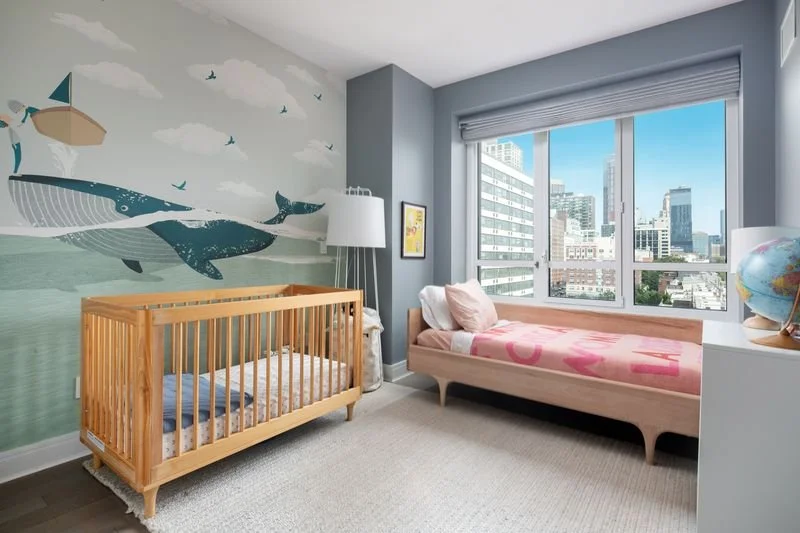What Are the Living Options for a Disabled Person in NYC?
Being disabled in a big city like New York can cause a few issues, and finding a place to live is one of the hardest to resolve. Here are some potential solutions.
New York City underwent landmark civil rights legislation that was supposed to make developers build more accessible homes, but five years on and the results have been mixed.
Many apartments still fall short of the legislation, leaving lots of disabled people unable to find appropriate housing. Even when there is housing, it’s often difficult to afford so finding ways to pay for it, such as making a medical negligence claim, have to be addressed.
In this post, we’re going to briefly touch on the ways disabled people can afford to pay for housing in New York City before delving into the living options available to them.
How to Pay for Your Living Expenses
In New York City, 52.4 percent of disabled people spend over a third of their income on rent compared to 42.1 percent of their non-disabled peers. Add to this the fact that there are less jobs out there for people with disabilities, expensive living options are effectively off the table.
However, there are ways to afford the more expensive options as well as affordable housing options for those who can’t. These include:
Make a Medical Negligence Claim
Lots of disabilities can be the result of negligent medical treatment, even ones you’re born with, like cerebral palsy. So, it’s always worth it to get a cerebral palsy lawyer and consider checking if you’re eligible to put in a claim.
The reason these claims are so useful for affording housing is that they can pay out for the rest of your life if you’ve obtained a severe disability. The compensation you receive could cover:
Cost of adaption to the home (or a new home if appropriate)
Professional paid care and support
Loss of earning or chance of being promoted at work
Disadvantage on the Open Labour Market
Cost of future treatment (surgery, medication, physiotherapy)
Cost of transport needs
The cost of a new home is on the cards, but even if you can’t get a payment for this, any compensation you receive will relieve some of your funds to help you pay for a home. So, it’s definitely worthwhile looking into it.
Affordable Housing and Benefits
If the above option isn’t available to you, you can always apply for affordable housing. New York City offers several resources for renting or buying affordable homes and apartments.
Applying for these programs doesn’t guarantee you a home, as there are eligibility requirements you need to meet and a certain number of homes available. However, they’re always worth putting your name down for.
There are also benefits, such as rental and utilities assistance, that you can find on the NYC Mayor’s Office for People with Disabilities website.
What Your Disabled Living Options Are in NYC
Now that we have an idea of how a disabled person can pay for accommodation in New York City, it’s time to look at your options.
1. Avalon Communities
If you have the money to afford high-end housing, Avalon Communities have a range of accessible properties on offer.
Complexes like AVA High Lane and Avalon Clinton have disability access, large closets big enough for a wheelchair and sliding doors that are easy for disabled people to use. These are definitely luxury apartments but if you have the money, why not live a little?
2. Concern for Independent Living
This housing agency works with disabled people across New York State, not just New York City, maintaining several apartment buildings and single-family homes.
Concern for Independent Living focus on helping people with disabilities, including those on low income, with supported living and community living. They even provide apartments where residents are visited by staff for treatment twice a week.
This is one of the best living options if you want to live with your family, instead of on your own, and live outside of the actual city.
3. Services for the Underserved
Services for the Underserved is a great living option for people with disabilities, mental illness, veterans and others.
They manage 58 housing facilities with 1,700 units and 3,000 residents. These houses range from permanent to emergency or respite housing, and SUS are determined to provide homes that are personal to the resident.
4. ADAPT Community Network
ADAPT sponsors a variety of living options for people with intellectual or developmental disabilities, all of which are designed to meet the needs of their residents. These options include:
Supervised living: where residents have professionally trained 24-hour staff who take care of nursing and community social activities.
Supported living: where residents live in an apartment with a roommate of their choice and staff are available to help with independence training and money management.
Independent living: where residents live by themselves and pay their own rent and bills, with subsidies to help them succeed.
5. Institute for Community Living
If you looked at the living options available through ADAPT and thought that assisted living seemed like a good option for you or a relative, then the ICL might be what you’re looking for.
The ICL assist individuals and families who’ve been affected by mental illness or developmental disabilities. Their aim is to give these people integrated comprehensive care that will improve their wellbeing, recovery and participation in community living.
In their communities the ICL serve 10,000 adults, veterans and children who need help integrating into society.
Are These All the Living Options Available to Disabled People in NYC?
In this post, we’ve covered how to afford housing as a disabled person living in NYC and some of the living options available to them.
There are lots of options out there, so if you haven’t found what you’re looking for here it’s worth searching the internet until you find it. Hopefully these examples are a decent indicator of the options available to you, and good luck with your search.









